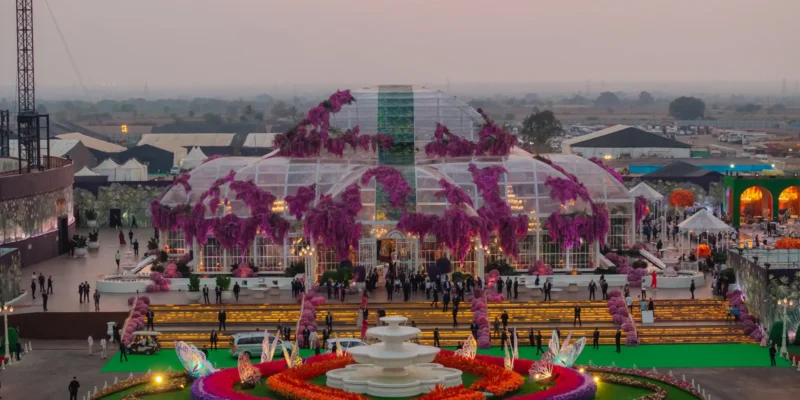Tensile structures have revolutionized the architectural landscape, offering unparalleled
flexibility, durability, and aesthetic appeal. These innovative structures have become an
integral part of modern infrastructure, from iconic stadiums to sleek transportation hubs. At
Whiteshed Solutions LLP, we specialize in designing, engineering, and installing tensile
structures that cater to diverse needs. In this blog, we’ll delve into the different types of
tensile structures and their applications.
Different Types of Tensile Structures
Tensile structures are beautiful and functional architectural designs that use tension to
support loads. They are often made from fabric or thin plates, giving them a sleek
appearance. If you’re curious about the different types of tensile structure you’ve come to
the right place in this Blog, we’ll explore three main types: membrane structures, cable
structures, and arches. These designs results in lighter, more efficient buildings that can
cover large spans.
1. Membrane Structures
Membrane structures are probably the most recognizable type of tensile structure. Made
typically from fabrics or membranes, these structures are commonly used for outdoor
spaces like stadiums, pavilions, and exhibition centers.
Material Choices: Membrane structures can be made from materials such as PVC, PTFE
(polytetrafluoroethylene), or ETFE (ethylene tetrafluoroethylene).
Span and Shape: These structures can be customized into various shapes, allowing for
complex forms. Examples include fabric canopies, tensioned roof systems, and inflatable
structures.
“Membrane structures inject a vital dose of airiness into urban landscapes. Says –
Whiteshed Solutions LLP
2. Cable Structures
Cable structures are another fascinating type of tensile structure. They primarily differ from
membrane structures by using cables to support their load. This type includes those iconic
bridges with large spans, creating a unique mix of art and engineering.
Material: As the name suggests, cables are usually made from high-strength steel, which
allows them to handle great tensions without stretching.
Shape and Support: Unlike the smooth curves of membrane structures, cable structures
often feature stark lines and angles. They are typically used in tunnels, pedestrian bridges,
and even some stadiums.
Cable structures can hold large loads and cross significant distances. This makes them
popular for both practical and aesthetic designs. Famous examples include the Pragati
Maidan (New Delhi) and the Jawaharlal Nehru Stadium (New Delhi) in Delhi, showcasing
the elegance of a mix of form and function.
Advantages of Cable Structures
High Load Capacity: These structures can handle heavy loads while maintaining lightweight
characteristics.
Versatility: Cable structures can be modified for various applications, from sports venues to
bridges.
Minimal Material Use: Cables allow for a reduced need for bulky support materials.
Limitations of Cable Structures
Maintenance Needs: Cable systems can require regular inspections to prevent failure.
Weather Sensitivity: Extreme weather conditions may affect cables, leading to safety
concerns.
3. Arches and Combinations
Arches involve a somewhat different take on tensile structures. These curved designs exert
compression. However, they can still be combined with tensile elements, creating hybrid
solutions that offer support and elegance.
Material Sources: Common materials include reinforced concrete or steel. They may use
cables to expand span options further.
Applications: Arches are often found in historic and modern buildings, bridges, and sports
venues.
An example is Arch-shaped tensile structure Chennai International Airport (Chennai)
Soaring 170.6 feet into the sky. This magnificent structure beautifully showcases how
tensile and compressive forces can blend harmoniously.
Advantages of Arched Structures
Strength and Resilience: Arches genuinely combine strength and aesthetic appeal.
Wide Open Spaces: They allow for a vast area beneath the arch, making them desirable for
public spaces.
Limitations of Arched Structures
Cost: Creating an arch can be more expensive than other designs.
Complicated Acoustics: The shape can complicate sound, which may be an issue for
performance venues.
Tensile structures have transformed the architectural landscape, offering innovative
solutions for diverse applications. At Whiteshed Solutions LLP, our team of experts is
dedicated to designing, engineering, and installing tensile structures that exceed client
expectations. Whether you’re looking for a iconic stadium or a sleek transportation hub, our
expertise ensures exceptional quality and durability.

